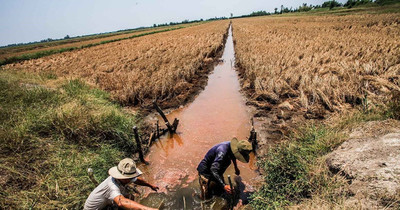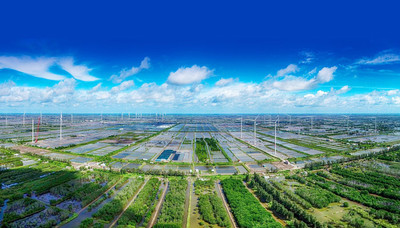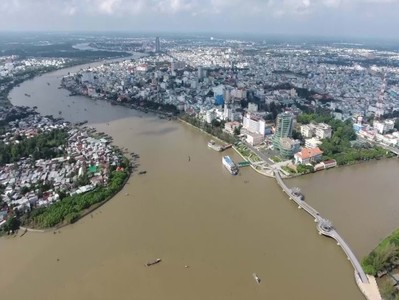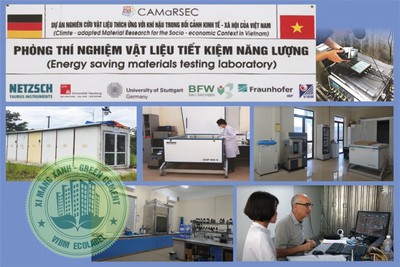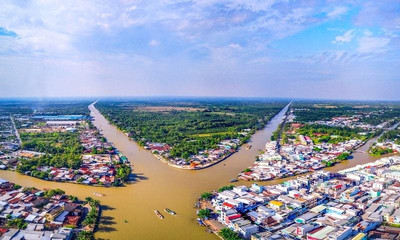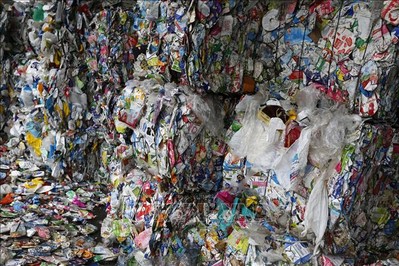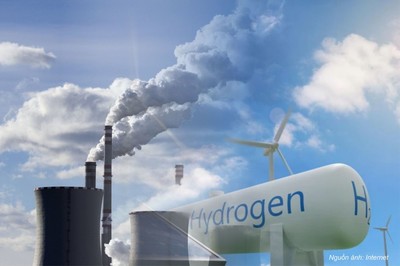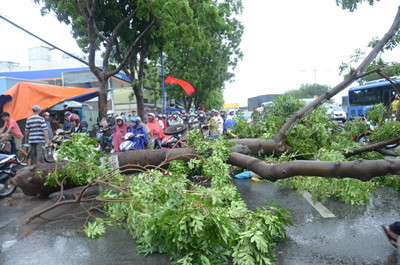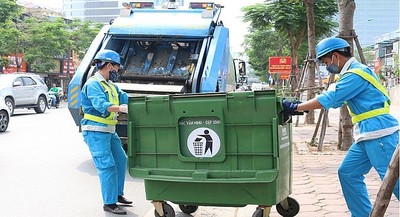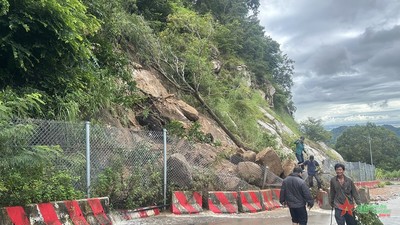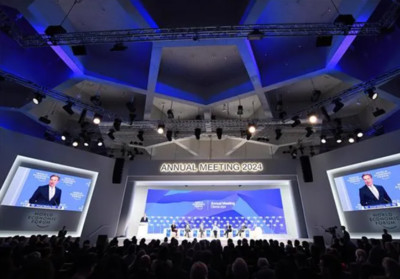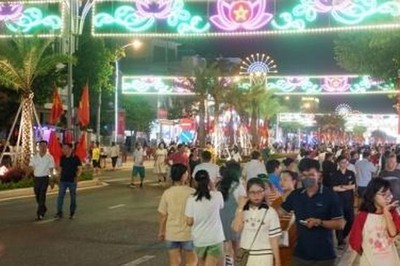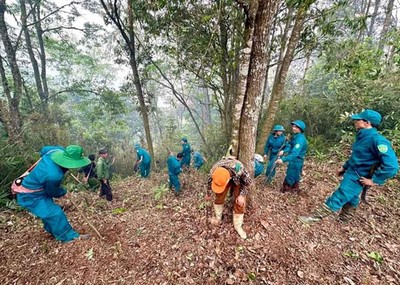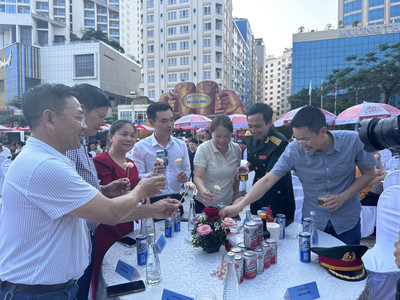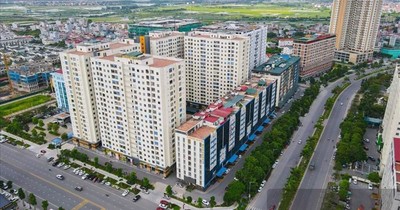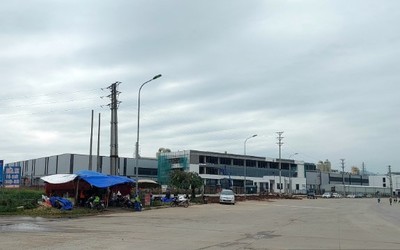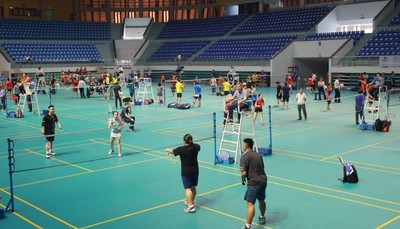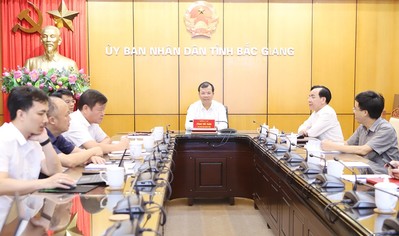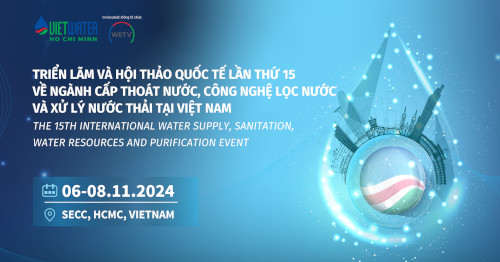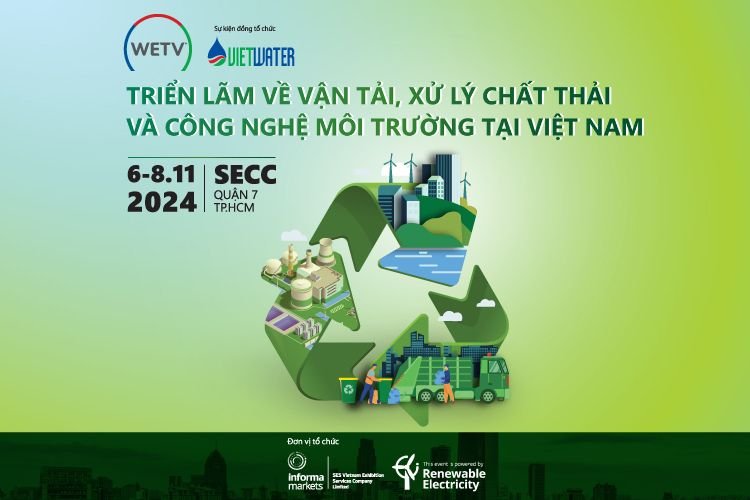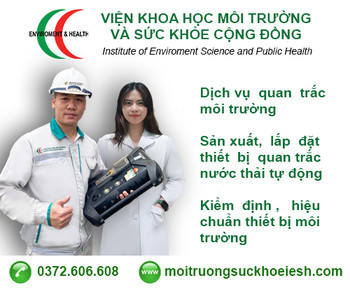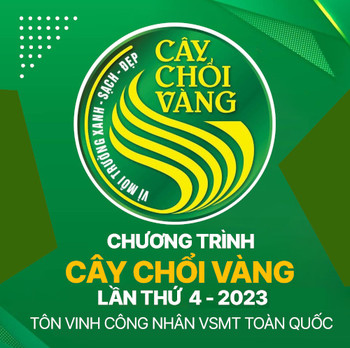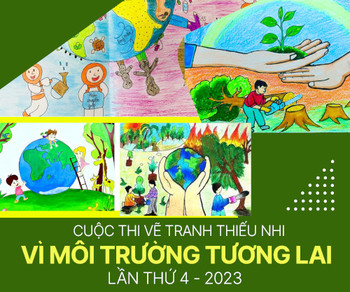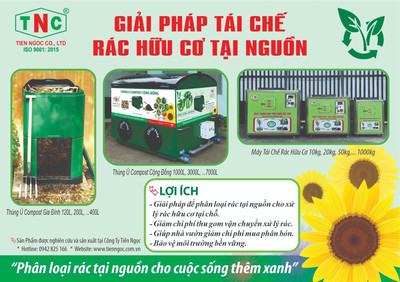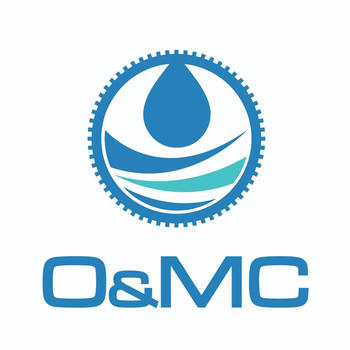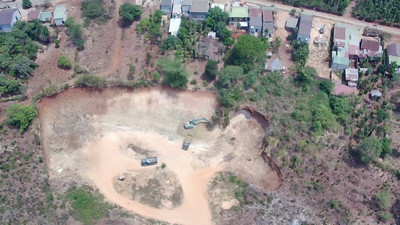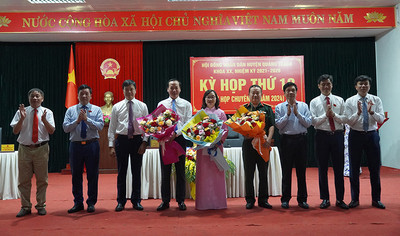Công bố quốc tế lĩnh vực môi trường số 25-2023
Trân trọng giới thiệu tới quý độc giả Công bố quốc tế lĩnh vực môi trường số 25-2023 với những nội dung chính như sau:
Về quản lý môi trường
- Đặc điểm của bối cảnh lý sinh dẫn đến cháy rừng nghiêm trọng ở Bồ Đào Nha và các biện pháp kiểm soát môi trường của họ.
- Khung phương pháp đánh giá định lượng tác động của biến đổi khí hậu toàn cầu đến môi trường sống dưới nước của các loài cá nước ấm trên sông.
- Áp dụng tài chính bù đắp khí hậu cho an ninh nước.
- Các vấn đề quản trị: Mở rộng đô thị, quy định môi trường và ô nhiễm PM2.5.
- Bất bình đẳng năng lượng và mối quan hệ ô nhiễm không khí ở Ấn Độ.
- Đánh giá tác động tiềm ẩn của thuế carbon ở Chile bằng mô hình CGE động.
- Biến động giá kim loại xanh và mối quan hệ phát triển bất động sản bền vững với môi trường: Góc nhìn toàn cầu từ hậu đại dịch COVID-19.
- Nguồn gốc, sự xuất hiện, phân phối, số phận và tác động của các chất ô nhiễm vi nhựa trong nước ngọt đối với môi trường: Đánh giá quan trọng và con đường phía trước.
- Một bước để đạt được chương trình nghị sự SDG 2030: Phân tích sức mạnh dự báo của toàn cầu hóa thông tin trong mối quan hệ giữa đổi mới công nghệ và quản lý môi trường ở các nền kinh tế xanh nhất.
Về môi trường đô thị
- Tác động thúc đẩy của việc sử dụng đất và mô hình cảnh quan đối với các dạng sống thực vật tự phát khác nhau dọc theo hành lang sông đô thị trong một thành phố đang phát triển nhanh.
- Các chỉ số căng thẳng oxy hóa gây ra bởi các kim loại liên kết với PM2.5 trong công nghiệp và đô thị trong các tế bào A549.
- Tầm quan trọng của việc thiết kế phân bố không gian và mật độ thảm thực vật trong công viên đô thị để tăng trải nghiệm về sự an toàn.
- Phân tích mối quan hệ nước-năng lượng trong hệ thống cấp nước đô thị dựa trên mô hình quy hoạch và đánh giá nước.
- Tương tác do người dân khởi xướng trong quản lý nước đô thị: Cách thức các cơ quan công quyền phản ứng với các ý kiến cấp vi mô liên quan đến các giải pháp dựa vào thiên nhiên.
- Đặc tính, đánh giá rủi ro và ước tính nguồn gốc của hydrocacbon thơm đa vòng gắn với PM10 trong thời gian mùa đông trong không khí xung quanh của Thành phố Basrah, Iraq.
- Phục hồi khoai tây giòn làm tăng sự đa dạng của vi sinh vật biểu sinh và cải thiện chất lượng nước ở một con sông đô thị bị ô nhiễm vi mô.
- Vị trí cảm biến tối ưu để giám sát thường xuyên hệ thống thoát nước đô thị: Phương pháp tái phân cụm.
- Tác động của nước rò rỉ bãi chôn lấp chất thải rắn đô thị đến tỷ lệ sản xuất khí sinh học.
- Xử lý nước thải đô thị có chứa kháng sinh bằng cách sử dụng lò phản ứng màng sinh học dựa trên màng chuyển O2: Tương tác giữa quá trình chuyển hóa chất ô nhiễm thông thường và sự phân hủy sulfamethoxazole.
Về môi trường khu công nghiệp
- Loại bỏ phốt phát khỏi nước thải nhà máy bia bằng xeri(III) clorua có nguồn gốc từ chất đánh bóng đã qua sử dụng: Nghiên cứu phục hồi và tối ưu hóa.
- Ảnh hưởng của xen canh đến sản xuất nông nghiệp an toàn và xử lý đất nhiễm kim loại nặng bằng thực vật.
- Con đường, dòng và sự tích tụ phát thải ô nhiễm từ bãi chôn lấp tiếp nhận chất thải nguy hại chứa As và Hg.
- Triển khai Công nghiệp 4.0: Bền vững về môi trường và xã hội trong các doanh nghiệp đa quốc gia sản xuất.
- Giám sát tình trạng ô nhiễm và xây dựng các chỉ số để đánh giá các hoạt động quản lý môi trường bền vững (SEMP) tại Khu công nghiệp Quaid-e-Azam, Pakistan.
- Sự phân hủy sinh học của vi sinh vật đối với thuốc nhuộm tổng hợp khó tính từ nước thải dệt nhuộm bằng Fusarium oxysporum.
- Quá trình chuyển đổi năng lượng có thể là yếu tố thay đổi cuộc chơi đối với việc chuyển giao các ngành công nghiệp gây ô nhiễm từ các nước phát triển sang các nước đang phát triển không? Một ứng dụng của lý thuyết trò chơi.
- Sự xuất hiện, ước tính nguồn và đánh giá rủi ro của Hydrocarbon thơm đa vòng trong nước biển ven biển từ Khu liên hợp công nghiệp Quintero (Valparaíso, Chile).
Tranh dự thi Cuộc thi Vẽ tranh thiếu nhi "Vì môi trường tương lai" năm 2023 của Em Lê Thanh Vân đến từ Trường THCS Ngô Quyền, thị xã Sơn Tây, Hà Nội
CHUYÊN TRANG QUẢN LÝ MÔI TRƯỜNG
Tạp chí Môi trường và Đô thị Việt Nam
Xin trân trọng giới thiệu!
QUẢN LÝ MÔI TRƯỜNG
1. Characterization of biophysical contexts leading to severe wildfires in Portugal and their environmental controls
Science of The Total Environment, Volume 875, 1 June 2023, 162575
Abstract
Characterizing the fire regime in regions prone to extreme wildfire behavior is essential for providing comprehensive insights on potential ecosystem response to fire disturbance in the context of global change. We aimed to disentangle the linkage between contemporary damage-related attributes of wildfires as shaped by the environmental controls of fire behavior across mainland Portugal. We selected large wildfires (≥100 ha, n = 292) that occurred during the 2015–2018 period, covering the full spectrum of large fire-size variation. Ward's hierarchical clustering on principal components was used to identify homogeneous wildfire contexts at landscape scale on the basis of fire size, proportion of high fire severity, and fire severity variability, and their bottom-up (pre-fire fuel type fraction, topography) and top-down (fire weather) controls. Piecewise Structural Equation Modeling was used to disentangle the direct and indirect relationships between fire characteristics and fire behavior drivers. Cluster analysis evidenced severe and large wildfires in the central region of Portugal displaying consistent fire severity patterns. Thus, we found a positive relationship between fire size and proportion of high fire severity, which was mediated by distinct fire behavior drivers involving direct and indirect pathways. A high fraction of conifer forest within wildfire perimeters and extreme fire weather were primarily responsible for those interactions. In the context of global change, our results suggest that pre-fire fuel management should be targeted at expanding the fire weather settings in which fire control is feasible and promote less flammable and more resilient forest types.
2. Quantitative assessment methodology framework of the impact of global climate change on the aquatic habitat of warm-water fish species in rivers
Science of The Total Environment, Volume 875, 1 June 2023, 162686
Abstract
Global climate change (GCC), with global warming as the main characteristic, has become a global issue widely concerned by people. GCC impacts the hydrological regime at the watershed scale and affects the hydrodynamic force and the habitat conditions of freshwater ecosystems at the river scale. The impact of GCC on water resources and the water cycle is a research hotspot. However, there are few studies on water environment ecology related to hydrology and the influence of changes in discharge and water temperature on warm-water fish habitats. This study proposes a quantitative assessment methodology framework for predicting and analyzing the impact of GCC on the warm-water fish habitat. This system integrates GCC, downscaling, hydrological, hydrodynamic, water temperature and habitat models and was applied to the middle and lower reaches of the Hanjiang River (MLHR), where there are four major Chinese carps resource reduction problems. The results showed that the calibration and validation of the statistical downscaling model (SDSM) and the hydrological, hydrodynamic, and water temperature models were carried out using the observed meteorological factors, discharge, water level, flow velocity and water temperature data. The change rule of the simulated value was in good agreement with the observed value, and the models and methods used in the quantitative assessment methodology framework were applicable and accurate. The rise of water temperature caused by GCC will ease the problem of low-temperature water in the MLHR, and the weighted usable area (WUA) for spawning of the four major Chinese carps will appear in advance. Meanwhile, the increase in future annual discharge will play a positive role in WUA. In general, the rise in confluence discharge and water temperature caused by GCC will increase WUA, which is beneficial to the spawning ground of four major Chinese carps.
3. Applying climate reparative finance toward water security
Science of The Total Environment, Volume 875, 1 June 2023, 162506
Abstract
Water insecurity is increasing globally as one of the first perceivable effects of climate change. While water management is typically a local challenge, climate finance mechanisms offer the potential to switch climate-damaging capital toward climate reparative water infrastructure and create a sustainable, performance-based funding stream to incentivize safe water services globally.
4. Governance matters: Urban expansion, environmental regulation, and PM2.5 pollution
Science of The Total Environment, Volume 876, 10 June 2023, 162788
Abstract
Increasing PM2.5 pollution in urban expansion threatens citizens' health. Environmental regulation has proven to be an effective tool to directly combat PM2.5 pollution. However, whether it can moderate the impacts of urban expansion on PM2.5 pollution, in the context of rapid urbanization, is an interesting and unexplored topic. Therefore, this paper constructs a Drivers-Governance-Impacts framework and explores in depth the interactions among urban expansion, environmental regulation, and PM2.5 pollution. Based on 2005–2018 sample data from the Yangtze River Delta region, the estimation results of the Spatial Durbin model imply that (1) urban expansion has an inverse U-shaped association with PM2.5 pollution. The positive correlation may reverse when the ratio of urban built-up land area hits 0.21. (2) Of the three environmental regulations, investment in pollution control has little impact on PM2.5 pollution. Pollution charges and public attention exhibit a U-shaped and inverted U-shaped relationship with PM2.5 pollution, respectively. (3) In terms of moderating effects, pollution charges can exacerbate PM2.5 pollution from urban expansion, while public attention can inhibit it through its monitoring role. Therefore, we suggest that cities adopt differentiated strategies of urban expansion and environmental protection according to their urbanization levels. Meanwhile, appropriate formal regulation and strong informal regulation will help improve air quality.
5. Energy inequality and air pollution nexus in India
Science of The Total Environment, Volume 876, 10 June 2023, 162805
Abstract
Energy usage, inequality, and their impacts are deeply intertwined, especially in India. Every year, cooking using biomass-based solid fuel usage causes death to tens of thousands of Indians, specifically, economically unprivileged people. Solid fuel burning has been known as one of the prominent sources of ambient PM2.5 (particulate matter with an aerodynamic diameter of <2.5 μm) concentration in the atmosphere. Thus, limiting the PM2.5 emission from biomass-based cooking fuel through the transition to LPG has gained priority. The government report in India indicates that nearly 8 million households became beneficiaries of the LPG connection through the PMUY scheme till 2019. The transition to clean cooking fuel may have an influence on the ambient PM2.5 concentration. In this study, to explore the nexus between energy inequality and air pollution, we investigated the present status of clean fuel usage in India and its drivers, including the impact of such a massive transition to cleaner fuel on ambient air quality, with a specific focus on PM2.5. The results show an improvement of 15 % in LPG usage from 2015 to 2019 in India., Yet the majority of poorer (>60 %) and poorest communities (>90 %) still use solid biomass as the cooking fuel. No significant correlation (r = 0.036; p-value ≫ 0.05) was obtained between LPG usage and ambient PM2.5
6. Assessment of the potential impacts of a carbon tax in Chile using dynamic CGE model
Journal of Cleaner Production, Volume 403, 1 June 2023, 136694
Abstract
Carbon taxes have been proposed as a major instrument to mitigate carbon emissions and promote an energy transition to low carbon sources. However, its adoption remains politically challenging, particularly amid rising inflation and energy prices. Despite the need for more aggressive action on carbon mitigation to reach the Paris Agreement goals, few countries in Latin America have adopted carbon taxes and the tax levels are relatively low. A key concern for these countries, is to adequately assess the tradeoffs between stricter emission goals and the potential negative economy wide as well as sectoral and distributive impacts. In this context, in this paper we first propose a step by step approach to enhance an existing dynamic Computable General Equilibrium (CGE) model for Chile based on OECD's Green model. The contribution of this research is twofold. Firstly, emission factors are estimated and the development of the electricity sector is aligned with the expectations of decision makers. As a result, credible emission and energy sector development forecasts are generated by the model, that are in line with what policymakers expect to happen based on other bottom-up engineering models. Secondly, this baseline is then used in the CGE model to examine the use of a carbon tax to reach Chile's first Nationally Determined Contribution. The required tax level is determined together with CO2 emissions and the economywide, sectoral and distributive impacts. The results allow concluding about the applicability of carbon taxes and possible complementary measures.
7. How do external and internal factors drive green innovation practices under the influence of big data analytics capability: Evidence from China
Journal of Cleaner Production, Volume 404, 10 June 2023, 136862
Abstract
The questions of what drives green innovation practices and how such practices can be promoted have received increasing attention. Integrating stakeholder theory and resource-based theory, this study develops a holistic model to study how external and internal factors drive green innovation practices under the influence of big data analytics capability. We used the hierarchical multiple regression method to test data collected from 209 enterprises located in China. The results show that green competition is the most influential driving force for green innovation practices, followed by formal institutions, informal institutions and customer green demands. Top management environmental awareness plays a mediating role in the relationship between external factors and green innovation practices, and the mediating paths of the two types of environmental awareness are very different. Big data analytics capability plays a moderating role in the relationship between external drivers and top management environmental awareness.
8. Green metal price volatility and environmentally sustainable real estate development nexus: A global perspective from post COVID-19 pandemic
Journal of Cleaner Production, Volume 405, 15 June 2023, 136855
Abstract
This study examined the relationship between green metal price shocks and green real estate development using the Structural Vector Autoregressive (SVAR) model. Real-time daily dataset for the study covers the period from January 4, 2021, to December 30, 2022. The findings are presented using two methods: cumulative impulse responses and variance decompositions. The cumulative impulse responses show how structural shocks affect the volatility of green real estate over time. The variance decompositions show the percentage of the variation in green real estate volatility that is caused by each structural shock. The results showed that green real estate development responded negatively to green metal shocks for at least half of the observed period, and the energy price, specifically oil, had a greater and more persistent negative impact. This suggests that changes in oil prices may continue to have a significant influence on the development of green real estate projects and the broader transition towards environmentally sustainable practices in the construction industry. The explained variable, on the other hand, had a positive response to shocks associated with green finance in the latter part of the observed period. Policy and practical implications of the findings have also been discussed.
9. Heterogeneity and typology of the city-level synergy between CO2 emission, PM2.5, and ozone pollution in China
Journal of Cleaner Production, Volume 405, 15 June 2023, 136871
Abstract
Air pollution and climate change are issues of worldwide concern. Synergizing air pollution control and climate mitigation have been an important national policy of China. This study develops bivariate and integrated synergy indexes (BSI and ISI) to investigate the synergy states between air pollution and CO2 emission. The synergy indexes are based on the correlation coefficient and established from exploiting the internal comparability of the data. Using the BSI and ISI, we evaluated the correlation and synergy states between air pollution (involving ambient PM2.5 and ozone) and CO2 emission in Chinese cities from 2015 to 2020. The results present the city-level trends and heterogeneities of synergy between air pollution and CO2 emission. The averaged value of BSIPM2.5-ozone, BSIPM2.5-CO2, and BSIozone-CO2 for all cities and assessing years were −0.239, −0.291, and −0.242, indicating a generally and globally weak synergy. The synergy states between air pollution and CO2 emission were relatively significant and complex in specific regions. Combined with the local spatial association and decoupling analysis, we further identified the primary variables and key areas for synergistic control. This study provides a systematic idea and case demonstration for city-level synergy assessment through transforming and expanding the data usage capacity. The method and process are applicable to various scales and regions, which would be of reference value for synergy assessments in other countries and regions.
10. Research on carbon emission reduction effect of China's regional digital trade under the "double carbon” target-- combination of the regulatory role of industrial agglomeration and carbon emissions trading mechanism
Journal of Cleaner Production, Volume 405, 15 June 2023, 137049
Abstract
As a product of the integration of commerce and technology, digital trade is a key element of the digital economy. Giving full consideration to how digital trade reduces carbon emissions is crucial for achieving the objectives of "carbon peaking and carbon neutrality” and high-quality economic growth. The "production side” and "consumption side” of social reproduction process are also included in this study for analyzing digital trade and carbon emissions, and the moderating effects of industrial agglomeration and carbon emissions trading mechanisms on the effects of digital trade on carbon emission reduction are also covered. This study conducts the empirical test based on the data of 30 provincial samples in China from 2011 to 2020, with the dynamic spatial econometric model and system GMM estimation method. The findings demonstrate that digital trade clearly reduces carbon emissions. The effect also demonstrates regional heterogeneity, with the north being greater than the south, and the middle and western regions being stronger than the eastern regions. On the consumption side, the mediating effect of rural residents' consumption structure upgrade is the carbon emission inhibition effect, and the mediating effect of urban residents’ consumption structure upgrade is the carbon emission promotion effect. The adjustment mechanism test found that manufacturing agglomeration weakened the carbon emission reduction effect of digital trade, while producer service agglomeration, manufacturing-producer service industry synergistic agglomeration, and pilot policies for carbon emissions trading rights further strengthened the impact of carbon reduction effect of digital trade.
11. Source, occurrence, distribution, fate, and implications of microplastic pollutants in freshwater on environment: A critical review and way forward
Chemosphere, Volume 325, June 2023, 138367
Abstract
The generation of microplastics (MPs) has increased recently and become an emerging issue globally. Due to their long-term durability and capability of traveling between different habitats in air, water, and soil, MPs presence in freshwater ecosystem threatens the environment with respect to its quality, biotic life, and sustainability. Although many previous works have been undertaken on the MPs pollution in the marine system recently, none of the study has covered the scope of MPs pollution in the freshwater. To consolidate scattered knowledge in the literature body into one place, this work identifies the sources, fate, occurrence, transport pathways, and distribution of MPs pollution in the aquatic system with respect to their impacts on biotic life, degradation, and detection techniques. This article also discusses the environmental implications of MPs pollution in the freshwater ecosystems. Certain techniques for identifying MPs and their limitations in applications are presented. Through a literature survey of over 276 published articles (2000–2023), this study presents an overview of solutions to the MP pollution, while identifying research gaps in the body of knowledge for further work. It is conclusive from this review that the MPs exist in the freshwater due to an improper littering of plastic waste and its degradation into smaller particles. Approximately 15–51 trillion MP particles have accumulated in the oceans with their weight ranging between 93,000 and 236,000 metric ton (Mt), while about 19–23 Mt of plastic waste was released into rivers in 2016, which was projected to increase up to 53 Mt by 2030. A subsequent degradation of MPs in the aquatic environment results in the generation of NPs with size ranging from 1 to 1000 nm. It is expected that this work facilitates stakeholders to understand the multi-aspects of MPs pollution in the freshwater and recommends policy actions to implement sustainable solutions to this environmental problem.
12. Influence of spatial resolution of PM2.5 concentrations and population on health impact assessment from 2010 to 2020 in China
Environmental Pollution, Volume 326, 1 June 2023, 121505
Abstract
Ambient PM2.5 pollution is a leading environmental health risk factor worldwide. The spatial resolution of PM2.5 concentrations and population strongly impacts PM2.5-related health impact estimates. However, long-term variations and regional differences in this impact have rarely been explored, particularly in China. Here, by aggregating satellite-derived PM2.5 concentration and population datasets at 1-km resolution in China to coarser resolutions (10, 50, and 100 km), we evaluated decadal changes in the impact of resolution on health assessments at national and local scales. For the sensitivity of population-weighted mean (PWM) PM2.5 concentrations to resolution, we found that the national PWM PM2.5 concentration decreased with coarser resolutions; this pattern was widely observed and was more obvious in southern and central China and the Sichuan Basin. The results showed that the sensitivity of national PWM PM2.5 concentrations to resolution continuously weakened from 2010 to 2020, likely due to a reduction in the spatial heterogeneity of PM2.5 concentrations in regions with high sensitivity. This weakness caused a large underestimation of the long-term trend of national PWM PM2.5 using a 100-km resolution, which was 7% lower than the trend at 1 km. Regarding the sensitivity of PM2.5-attributable mortality to resolution, most of China exhibited a pattern in which attributable mortality decreased with coarser resolution. The sensitivity of the estimated PM2.5-attributable mortality to resolution also weakened over time on a national scale and in most parts of China. Nevertheless, the weakness for mortality sensitivity was not as apparent as for PWM PM2.5 sensitivity. This was likely because different drivers played distinct roles in the temporal variation of the mortality sensitivity: population aging enhanced the sensitivity, and variations in PM2.5 concentrations and population distribution both weakened the sensitivity. However, the national attributable mortality trend at a 100-km resolution was still underestimated by 1.75% relative to the 1-km resolution.
13. A step towards achieving SDG 2030 agenda: Analyzing the predictive power of information globalization amidst technological innovation-environmental stewardship nexus in the greenest economies
Journal of Environmental Management, Volume 335, 1 June 2023, 117541
Abstract
Through the transition of novel ideas, products, technologies, and business models, info-globalization facilitates the flow and expansion of cross-border information and resources. In the meantime, this stimulates the potential of informational globalization and the internet for environmental and other technological advancements, and assists to the realization of cleaner and greener production and consumption. However, prior studies have completely disregarded this facet of globalization. Thus, this novel study evaluates the role of technological innovation (TIN) and information globalization (ING) in predicting ecological footprints (EFP) and carbon emissions (CO2) in the world's top ten greenest economies. Besides, this study also unveils the moderating role of TIN and ING for environmental sustainability. The novel research employs non-parametric causality-in-quantiles approaches on quarterly data from 1994Q1 to 2019Q4 in order to quantify for causality-in-mean and causality-in-variance, since there may be no causation at first moment, but higher-order interdependencies may exist. The findings revealed that TIN and ING possess significant predictive potential for both ecological footprint and carbon emissions, indicating asymmetric predictability over environmental sustainability. Moreover, TIN and ING asserted a significant interaction role when it comes to predicting pollution levels in chosen countries. Overall, it is essential to note that natural resource conservation and pollution mitigation via green and technical innovation become a dilemma since pollution has no boundaries and will always stoke fires beyond them. The provision of financial and R&D assistance, as well as the use of mass and social media to raise awareness not only in their own regions but also in neighboring countries, might contribute to the achievement of SDG 13 and Cope26's ambition of cutting pollution by 2030.
14. Self-organizing map algorithm for assessing spatial and temporal patterns of pollutants in environmental compartments: A review
Science of The Total Environment, Volume 878, 20 June 2023, 163084
Abstract
The evaluation of the spatial and temporal distribution of pollutants is a crucial issue to assess the anthropogenic burden on the environment. Numerous chemometric approaches are available for data exploration and they have been applied for environmental health assessment purposes. Among the unsupervised methods, Self-Organizing Map (SOM) is an artificial neural network able to handle non-linear problems that can be used for exploratory data analysis, pattern recognition, and variable relationship assessment. Much more interpretation ability is gained when the SOM-based model is merged with clustering algorithms. This review comprises: (i) a description of the algorithm operation principle with a focus on the key parameters used for the SOM initialization; (ii) a description of the SOM output features and how they can be used for data mining; (iii) a list of available software tools for performing calculations; (iv) an overview of the SOM application for obtaining spatial and temporal pollution patterns in the environmental compartments with focus on model training and result visualization; (v) advice on reporting SOM model details in a paper to attain comparability and reproducibility among published papers as well as advice for extracting valuable information from the model results is presented.
15. Using the product environmental footprint to strengthen the green market for sustainable feed ingredients; Lessons from a green biomass biorefinery in Denmark
Science of The Total Environment, Volume 877, 15 June 2023, 162858
Abstract
Finding new and sustainable proteinaceous feed ingredients, especially those produced from locally available resources, is at the top of the agenda of many countries, including Denmark, to become feed protein self-sufficient. Protein concentrate (PC) production via the biorefining of green biomass has attracted considerable interest in recent years since they are more land efficient and productive than soybeans. The biorefining of clover-grass into protein concentrate (GPC) is a promising substitute for soybean and soybean meal, however, the environmental impacts of GPC have not been studied. The Product Environmental Footprint (PEF) method, developed by EU Joint Research Centre for the "Single Market for Green Products Initiative” was employed to assess the environmental footprints of organic GPC. The instructions, methodology, and guidelines detailed in Product Environmental Footprint Category Rules (PEFCR) Feed for Food-Producing Animals were followed to implement this PEF study. The results were intended for in-house management, process improvement, early guidance on the environmental footprint (EF) of compound feeds containing GPC, and the EF of livestock and animal production whose feed ration contains GPC. Our results showed that GPC would have a climate change impact of 1091.47 kg CO2,eq/t GPC. We found that farming/cultivation, more specifically direct emissions from manure slurry, dominated most impact categories, including acidification and eutrophication. The results were found sensitive to the choice of allocation method and very case-specific. For instance, the climate change impact of GPC was higher under economic allocation than direct substation, but the acidification impact was lower in economic allocation than direct substitution. However, the direct substitution method, showed that treating the process residues in biogas plants could result in GPC with lower EFs. The sensitivity analysis confirmed that increasing the clover-grass productivity and decreasing either manure slurry application or nitrogenous emissions from its application are the keys to further decreasing the overall environmental impacts.
16. How does financial development influence carbon emission intensity in the OECD countries: Some insights from the information and communication technology perspective
Journal of Environmental Management, Volume 335, 1 June 2023, 117553
Abstract
Based on an extended STIRPAT framework, this paper investigates the effects of financial development on carbon emission intensity in OECD countries from linear and non-linear perspectives, where financial development is proxied by three dimensions: financial deepening, financial deepening, and financial size, and financial efficiency. Fortunately, three types of financial development significantly alleviate carbon emission intensity. An extended moderation effect model is built to estimate the effect of financial development via information and communication technology on carbon emission intensity. The results reveal that internet-based information and communication technology and service-based information and communication technology are positively correlated with carbon emission intensity. To effectively handle the endogeneity issue triggered by causal relationships between variables and allow potential non-linear nexus, an advanced dynamic panel threshold model incorporating the generalised method of moments is employed to investigate how financial development affects carbon emission intensity under different types of information and communication technology. Empirical evidence demonstrates the significance of the non-linear nexus between financial development and carbon emission intensity. Lastly, heterogeneity analysis demonstrates the existence of heterogeneity associated with institutional quality, degree of economic development, and resource endowment concerning the effect of financial development on carbon emission intensity among the OECD countries.
MÔI TRƯỜNG ĐÔ THỊ
1. Urban particulate water-soluble organic matter in winter: Size-resolved molecular characterization, role of the S-containing compounds on haze formation
Science of The Total Environment, Volume 875, 1 June 2023, 162657
Abstract
Water-soluble organic matter (WSOM), as a group of ubiquitous components in atmospheric PM, plays a crucial role in global climate change and carbon cycle. In this study, the size-resolved molecular characterization of WSOM in the range of 0.010–18 μm PM was studied to gain insights into their formation processes. The CHO, CHNO, CHOS, CHNOS compounds were identified by the ultrahigh-resolution Fourier transform ion cyclotron resonance mass spectrometry in ESI source mode. A bimodal pattern of the PM mass concentrations was found in the accumulation and coarse mode. The increasing mass concentration of PM was mainly attributed to the growth of large-size PM with the occurrence of haze. Both Aiken-mode (70.5–75.6 %) and coarse-mode (81.7–87.9 %) particles were proven the main carriers of the CHO compounds, the majority of which were indicated to be the saturated fatty acids and their oxidized derivatives. The S-containing (CHOS and CHNOS) compounds in accumulation-mode (71.5–80.9 %) increased significantly in hazy days, where organosulfates (C11H20O6S, C12H22O7S) and nitrooxy-organosulfates (C9H19NO8S, C9H17NO8S) were confirmed in majority. The S-containing compounds in accumulation-mode particle with high oxygen content (6–8 oxygen atoms), unsaturation degree (DBE < 4), and reactivity could facilitate the particle agglomeration and accelerate the haze formation.
2. Driving effects of land use and landscape pattern on different spontaneous plant life forms along urban river corridors in a fast-growing city
Science of The Total Environment, Volume 876, 10 June 2023, 162775
Abstract
River corridors are critical in connecting fragmented greenspace and providing habitats for plants and animals. There is a paucity of information on the detailed influence of land use and landscape patterns on the richness and diversity of distinct life forms of urban spontaneous vegetation. This study aimed to identify the variables that dramatically affect spontaneous plants and then disentangle how to manage such a variety of land types to maximize the biodiversity-supporting function of urban river corridors. The total species richness was remarkably influenced by the amount of commercial, industrial, and waterbody area and the landscape complexity of water, green space, and unused land. In addition, the spontaneous plant assemblages of different life forms significantly differed in their responses to land use and landscape variables. Vines were more sensitive to urban sites, i.e., strongly negatively affected by residential and commercial areas but positively supported by green space and cropland. Multivariate regression trees indicated that the total plant assemblages were clustered most remarkably by the total industrial area, and the classified responding variables differed among distinct life forms. The colonizing habitat of spontaneous plants explained a high proportion of the variance and was also closely related to the surrounding land use and landscape pattern. These scale-specific interaction effects ultimately determined the variation in richness among various spontaneous plant assemblages in urban sites. Based on these results, in future city river planning and design, spontaneous vegetation could be protected and promoted by a nature-based solution according to their adaptability and preference for distinct landscape characteristics and habitat features.
3. Oxidative stress indices induced by industrial and urban PM2.5-bound metals in A549 cells
Science of The Total Environment, Volume 877, 15 June 2023, 162726
Abstract
The detrimental effects of atmospheric fine particulate matter (PM2.5) on human health are of major global concern. PM2.5-bound metals are toxic compounds that contribute to cellular damage. To investigate the toxic effects of water-soluble metals on human lung epithelial cells and their bioaccessibility to lung fluid, PM2.5 samples were collected from both urban and industrial areas in the metropolitan city of Tabriz, Iran. Oxidative stress indices, including proline content, total antioxidant capacity (TAC), cytotoxicity, and DNA damage levels of water-soluble components of PM2.5, were evaluated. Furthermore, an in vitro test was conducted to assess the bioaccessibility of various PM2.5-bound metals to the respiratory system using simulated lung fluid. PM2.5 average concentrations in urban and industrial areas were 83.11 and 97.71 μg/m3, respectively. The cytotoxicity effects of PM2.5 water-soluble constituents from urban areas were significantly higher than in industrial areas and the IC50 was found to be 96.76 ± 3.34 and 201.31 ± 5.96 μg/mL for urban and industrial PM2.5 samples, respectively. In addition, higher PM2.5 concentrations increased the proline content in a concentration-dependent manner in A549 cells, which plays a protective role against oxidative stress and prevents PM2.5-induced DNA damage. Also, the partial least squares regression revealed that Be, Cd, Co, Ni, and Cr, were significantly correlated with DNA damage and proline accumulation, which caused cell damage through oxidative stress. The results of this study showed that PM2.5-bound metals in highly polluted metropolitan city caused substantial changes in the cellular proline content, DNA damage levels and cytotoxicity in human lung A549 cells.
4. The importance of designing the spatial distribution and density of vegetation in urban parks for increased experience of safety
Journal of Cleaner Production, Volume 403, 1 June 2023, 136768
Abstract
This study presents an investigation of how different arrangements of vegetation, regarding spatial containment and density, affect the experience of safety in urban parks. A discrete choice experiment was used to obtain replies from a sample of 300 visitors to urban parks in Mashhad, Iran. Face-to-face surveys were conducted. Visitors randomly selected a block and evaluated six pairs of designed images of different urban park scenarios based on seven attributes (Physical accessibility, Spatial arrangement, Spatial volume, Lateral visibility, Complexity, Coherence, and Visual accessibility) and their levels. Each visitor chose their preferred option in relation to perceived safety. The results suggested that the perception of safety is strongly dependent on visual and physical accessibility, the degree of spatial enclosure, complexity and cohesion created by vegetation. This can help architects when designing urban parks; for example, the results showed that a combination of complex elements of five plant species with open lateral visibility, scattered cohesion with open lateral visibility, scattered cohesion with a two-sided spatial arrangement, and cluster cohesion with a four-sided spatial arrangement were most preferred regarding perceived safety. The findings also indicated that age, gender, and marital status affect some of the levels of the relevant variables. When designing and managing urban parks, aiming to improve users' perceived safety, these factors can be decisive.
5. Water-energy nexus analysis in an urban water supply system based on a water evaluation and planning model
Journal of Cleaner Production, Volume 403, 1 June 2023, 136750
Abstract
Consuming less energy and conserving more water are important targets in current water-energy nexus research and practice. However, these targets have not been simultaneously explored in the context of the water supply systems of megacities. In this study, the Water Evaluation and Planning (WEAP) platform is used to explore the energy consumption of the water supply system in Beijing with the energy intensity as the operational cost. The WEAP_Beijing model was built to analyze the energy consumption, water storage, and structure of water supply sources in Beijing from 2001 to 2019. The results indicate that the energy consumption of the water supply system in Beijing has been increasing since 2001; additionally, the energy intensity has increased from 2001 to 2013 and has varied between 1.15 and 1.25 kWh/m³ since 2014. This increasing trend is mainly driven by the increasing ratios of transported water and reclaimed water in the water supply system and by the current use strategy of transported water. Scenario analysis showed that transported water and reclaimed water have increased local water storage but have also led to increased energy consumption, which depends on their ratios in the total water supply and the water use strategy. The water supply structure of each water use sector was simulated and displayed distinct dynamics. An energy-friendly water supply system was proposed to adjust transported water use strategies, optimize the ratio of reclaimed water in the water supply, and manage water and energy from a holistic perspective. The results of this study suggest that a policy evaluation of current water policies is needed to secure and sustain the water supply in megacities.
6. Citizen-initiated interactions in urban water governance: How public authorities respond to micro-level opinions related to nature-based solutions
Journal of Cleaner Production, Volume 405, 15 June 2023, 137015
Abstract
Public opinions have become increasingly salient in water environmental governance, especially in implementing nature-based solutions (NBS) projects. However, current studies stay short of focusing on user-generated data on online participation platforms and the real public opinions and concerns on NBS revealed through spontaneous and interactive participation. In response to insufficient explorations on micro-level government-citizen interactions, this study adopts text mining analysis to evaluate different NBS-related topics and investigates targeted government responses from Jan 1st, 2020 to Apr 1st, 2022 in China. The results indicate that public participation on online government-citizen interaction platforms is no longer an instrumental level of "pseudo participation”. Based on dialogic communication theory (DCT), the silent majority affected by NBS started to express diverse opinions, i.e., seeking help, complaint, and suggestion. Moreover, instead of top-down or one-way communication, authorities are beginning to shift towards an open and responsive government. Hence, most public opinions can receive online feedback from authorities with targeted strategies (i.e., explaining, coordinating, and guiding), forming a "dialogic loop”. Nevertheless, there is still a lack of timely government response in NBS communication. Findings can contribute to developing a systematic understanding of micro-level demands associated with NBS and supplement relevant policies and decision-making for urban water governance.
7. Organophosphate esters in source, finished, and tap water in Wuhan, China
Chemosphere, Volume 325, June 2023, 138288
Abstract
As important plasticizers and flame retardants, organophosphate esters (OPEs) have resulted in the contamination of various water bodies worldwide. However, their removal efficiency by different tap water treatment processes and seasonal variations in drinking water in China are not fully understood. In this study, source (n = 20), finished (n = 20), and tap (n = 165) water samples sourced from the Hanshui and the Yangtze River were collected in Wuhan, central China from July 2018 to April 2019 to measure selected OPE concentrations. The OPE concentrations in the source water samples ranged 10.5–113 ng/L (median: 64.6 ng/L). Most OPEs were not removed effectively by conventional tap water treatment, except for tris(2-chloroisopropyl) phosphate (TCIPP). Interestingly, trimethyl phosphate content was found to increase significantly during chlorination for water sourced from the Yangtze River. The OPEs could be removed more effectively by advanced processes with ozone and activated carbon (maximum removal efficiency of specific OPE was 91.0%). Similar cumulative OPE concentrations (ΣOPEs) values were found for the finished water and tap water in February rather than in July. The ΣOPEs (ng/L) in the tap water ranged 21.2–365 (median: 45.1). TCIPP and tris(2-chloroethyl) phosphate were the predominant OPEs in the studied water samples. Significant seasonal variations in the OPE residues in tap water were observed in this study. OPE exposure via tap water ingestion posed low health risks to human beings. This is the first study reporting the removal efficiencies of OPEs and the seasonal variations in tap water from central China. This is also the first study documenting the occurrence of cresyl diphenyl phosphate and 2,2-bis(chloromethyl)propane-1,3-diyltetrakis (2-chloroethyl) bisphosphate in tap water. Based on currently available data, the contamination of tap water by OPEs is in the order of Korea > eastern China > central China > New York State, the United States. Additionally, this study provides a method involving a trap column, to eliminate OPE contamination from the liquid chromatography system.
8. Characterization, risk assessment, and source estimation of PM10-bound polycyclic aromatic hydrocarbons during wintertime in the ambient air of Basrah City, Iraq
Chemosphere, Volume 326, June 2023, 138444
Abstract
In this study, the concentration and structure of polycyclic aromatic hydrocarbons (PAHs) associated with the ambient PM10 in Basrah City, Iraq have been investigated for the first time. From December 2021 to February 2022, PM10 samples were collected on quartz fiber filters, extracted using an optimized extraction protocol, and analyzed for the sixteen US EPA priority PAHs. The results indicated that 4- and 5-ring PAHs represent 52% of the total detected PAHs. The most abundant PAHs over the study period were chrysene (1.2 ± 1.5 ng m−3), fluorene (0.9 ± 1.4 ng m−3), and benzo[b]fluoranthene (0.7 ± 0.9 ng m−3). Source identification suggested that PM10-bound PAHs primarily originated from pyrogenic and petrogenic activities in Basrah City. In addition, the cancer risk associated to PAH exposure was assessed based on benzo[a]pyrene equivalent concentration and was found ranging from 0.07 to 6.32 ng m-3 hence, it exceeded the threshold limit of 1.0 ng m−3 established by the European legislation (EU, 2014). Benzo[a]pyrene was determined to be main contributor to total carcinogenic power of the detected PAHs, accounting for 50.3%, followed by dibenz[a,h]anthracene (22.3%). Similarly, benzo[a]pyrene represented a major contributor to PAH associated mutagenicity, accounting for 43.5% of the total.
9. Potamogeton crispus restoration increased the epiphytic microbial diversity and improved water quality in a micro-polluted urban river
Environmental Pollution, Volume 326, 1 June 2023, 121485
Abstract
Special characterization and assembly of epiphytic microbial communities remain unclear in micro-polluted water column during submersed macrophytes restoration. In this study, an in-situ enclosure area sowing with turions of Potamogeton crispus (P. crispus) was conducted in a micro-polluted urban river to investigate the characterization of P. crispus and epiphytic microbial communities and their response to water environment under different water depths. Turions completely germinated in water column with <90 cm water depth and the germination speed decreased with increasing water depth within 18 days. There were obvious differences in morphological characteristics of P. crispus between deep and shallow water layers. P. crispus restoration decreased by 12–32%, 13–36%, 9–43% and 5–36% of COD, NH4+-N, TN and TP concentration, respectively, in enclosed overlying water compared to the river (P < 0.05) during 5 months of experiment. Illumina sequencing was employed to explore the epiphytic bacterial and microeukayotic communities at water depth 25–35 cm (shallow area) and 80–90 cm (deep area). A total of 9 bacterial and 12 microeukayotic dominant phyla were obtained in eight samples. It should be noted that the algae abundances were higher in shallow area than deep area but a reverse trend was observed for methanotrophs. Null model analysis revealed that dispersal limitation and undominated process was the most important assembly process, whereas stochastic processes gained more importance in shallow area than deep one. According to cooccurrence analysis (|r| > 0.6, P < 0.05), there were more strongly correlated edges in shallow area (456 edges) than deep area (340 edges). These results highlight that submerged macrophytes restoration can increase microbial diversity and improve water quality, and provide a "summer disease cured in winter” way by using could-resistant P. crispus for water purification in micro-polluted rivers in low-temperature season.
10. Optimal sensor placement for the routine monitoring of urban drainage systems: A re-clustering method
Journal of Environmental Management, Volume 335, 1 June 2023, 117579
Abstract
The construction of an efficient monitoring network is critical for the effective and safe management of urban drainage systems. This study developed a re-clustering methodology that incorporates additional perspectives beyond node similarity to improve the traditional clustering process for optimal sensor placement. Instead of targeting event-specific water quality or hydraulic monitoring, the method integrates the water hydraulic and quality characteristics of nodes in response to the demand for routine monitoring. The implementation of this method first applies model simulation to generate the attribute datasets required for clustering analysis, and then re-clusters the initial clustering result according to the constructed re-clustering potential indices. And the information theory-based evaluation metrics were introduced to quantitatively assess the sensor deployment scheme obtained by amalgamating the two clustering results. Two networks with different drainage systems and sizes were chosen as case studies to illustrate the application of the framework. The results demonstrate that the clustering process enables to expand the information contained in the monitoring network, and that the re-clustering strategy can generate more comprehensive and practical solutions upon this basis.
11. Impact of municipal solid waste landfill leachate on biogas production rate
Journal of Environmental Management, Volume 336, 15 June 2023, 117643
Abstract
Landfills/open dump sites are the final disposal facilities for municipal solid waste (MSW). These sites undergo continuous process of biochemical reactions and anaerobic degradation, which make them prone to generation of landfill gas (LFG) and leachate. Worldwide, the quantitative and qualitative assessment for leachate treatment and management has been a growing concern. The present study investigated the physico-chemical characteristics and heavy metal parameters for fresh, 3-month, 6-month and 3-year old landfill leachate samples. The total dissolved solids (13280 mg/l), alkalinity (13000 mg/l), chemical oxygen demand (42000 mg/l) and total organic carbon (16500 mg/l) was found to be maximum in 3-year old leachate sample. While, the 3 and 6-month old leachate samples had maximum heavy metal concentration. The attempt was also made to identify the key parameters responsible to enhance biogas production yield from different ages of MSW. The substrate combinations of MSW and 3-year old leachate samples was prepared at varying proportion. The study was performed in three cycles and the volume of leachate diffused in each cycle was kept constant. The control samples with no leachate diffusion was also prepared to compare the percentage increase in biogas production rate. It was found that the cumulative methane (CH4) production from fresh (358 ml/g) and 3-month old MSW (273 ml/g) was maximum, and the overall percentage increase was 43% and 32%. It was also conclusive that the excess leachate diffusion of >15 ml results in low calcination behaviour and CH4 production rate. The response surface methodology was used to correlate and validate independent input variables (volatile solids, C/N ratio and leachate concentration) responsible for maximum CH4 yield.
12. Municipal wastewater contains antibiotic treatment using O2 transfer membrane based biofilm reactor: Interaction between regular pollutants metabolism and sulfamethoxazole degradation
Science of The Total Environment, Volume 879, 25 June 2023, 163060
Abstract
The antibiotic sulfamethoxazole (SMX) is frequently detected in wastewater treatment plant effluents and has attracted significant attention owing to its significant potential environmental effects. We present a novel O2 transfer membrane based biofilm reactor (O2TM-BR) to treat municipal wastewater to eliminate containing SMX. Furthermore, conducting metagenomics analyses, the interactions in biodegradation process between SMX and regular pollutants (NH4+-N and COD) were studied. Results suggest that O2TM-BR yields evident advantages in SMX degradation. Increasing SMX concentrations did not affect the efficiency of the system, and the effluent concentration remained consistent at approximately 17.0 μg/L. The interaction experiment showed that heterotrophic bacteria tend to consume easily degradable COD for metabolism, resulting in a delay (>36 h) in complete SMX degradation, which is 3-times longer than without COD. It is worth noting that the taxonomic and functional structure and composition in nitrogen metabolism were significantly shifted upon the SMX. NH4+-N removal remained unaffected by SMX in O2TM-BR, and the expression of K10944 and K10535 has no significant difference under the stress of SMX (P > 0.02). However, the K00376 and K02567 required in the nitrate reductase is inhibited by SMX (P < 0.01), which hinders the reduction of NO3−-N and hence the accumulation of TN. This study provides a new method for SMX treatment and reveals the interaction between SMX and conventional pollutants in O2TM-BR as well as the microbial community function and assembly mechanism.
13. Widespread human waste pollution in surface waters observed throughout the urbanized, coastal communities of Lee County, Florida, USA
Science of The Total Environment, Volume 879, 25 June 2023, 162716
Abstract
The coastal communities of Lee County, Florida, USA have grown rapidly since the 1970s. In this county, drainage ditches, canals, creeks, and the Caloosahatchee River Estuary often have high concentrations of nutrients and bacteria limiting their designated uses. Septic systems have previously been identified as a major pollution source in some areas of Lee County; therefore, this study sought to identify the extent of this issue throughout the county. To accomplish this, surface water samples were collected at 25 ditch, creek, or canal sites suspected of human waste contamination from septic systems in various drainage basins throughout Lee County during January 2020–January 2021. Water samples were analyzed for nutrients, dual stable nitrate isotopes (δ15N-NO3−, δ18O-NO3−), fecal indicator bacteria (enterococci, Escherichia coli), a molecular tracer of human waste (HF183), and chemical tracers of human waste (the artificial sweetener sucralose, pharmaceuticals). Particulate organic matter (POM) and macrophytes were also collected and analyzed for stable carbon (δ13C) and nitrogen (δ15N) isotopes, as well as elemental composition (C:N:P). To broaden the assessment of stable isotope values and C:N:P, archived macrophyte samples from 2019 were also included in analyses. Ammonium concentrations were high (> 4.3 μM) in 55 % of samples. Fecal bacteria were high in 66 % of samples. HF183 was detected in 50 % of samples and positively correlated with enterococci (r = 0.32). Sucralose concentrations were high (> 380 ng/L) in 54 % of samples, while carbamazepine was detected in 40 % of samples. Human waste N sources were indicated by δ15N > 3.00 ‰ at 44 % of sites by δ15N-NO3−, 68 % of sites by POM, and at 100 % of sites where macrophyte samples were collected. This large-scale study provides evidence of widespread human waste pollution throughout Lee County and can help guide infrastructure improvements to promote sustainable development. These findings should be applicable to urbanized regions globally that are experiencing declines in water quality and harmful algal blooms due to development with inadequate infrastructure.
14. Riverine inputs, spatiotemporal variations, and potential sources of phthalate esters transported into the Bohai Sea from an urban river in northern China
Science of The Total Environment, Volume 878, 20 June 2023, 163253
Abstract
The effects of anthropogenic activities on pollutant transport and inputs to the sea remain unclear. This study aimed to evaluate the impacts of sewage discharge and dam interception on riverine inputs, spatiotemporal variations, and potential sources of phthalate esters (PAEs) throughout the Haihe River, one of the largest rivers in northern China. Based on seasonal observations, the yearly inputs of the total concentrations of 24 PAE species (Σ24PAEs) from the Haihe River to the adjacent Bohai Sea were in the range of 5.28–19.52 tons, a considerable amount compared with those of other large rivers worldwide. The value of Σ24PAEs in the water column ranged from 1.17 to 15.46 μg/L and showed the following overall seasonal pattern: normal season > wet season > dry season, with dibutyl phthalate (DBP) (31.0 ± 11.9 %), di (2-ethylhexyl) phthalate (DEHP) (23.4 ± 14.1 %), and diisobutyl phthalate (DIBP) (17.2 ± 5.4 %) as the dominant components. Σ24PAEs were higher in the surface layer, slightly lower in the intermediate layer, and higher in the bottom layer. Σ24PAEs increased from the suburban section to the urban and industrial sections, which may indicate the effects of runoff, biodegradation, regional urbanization, and industrialization levels. The Erdaozha Dam intercepted 0.29–1.27 tons of Σ24PAEs inputs into the sea, but induced a substantial quantity accumulated behind the dam. The dominant sources of PAEs were the basic residential necessities (18.2–25.5 %) and industrial production (29.1–53.0 %). This study provides insights into the direct effects of sewage discharge and river dams on the inputs and variations in the PAEs entering the sea, which can be leveraged to manage and control PAEs in megacities.
15. Machine learning assesses drivers of PM2.5 air pollution trend in the Tibetan Plateau from 2015 to 2022
Science of The Total Environment, Volume 878, 20 June 2023, 163189
Abstract
The Tibetan Plateau (known as the Earth's Third Pole) has significant impact on climate. Fine particulate matter (PM2.5) is an important air pollutant in this region and has significant impact on health and climate. To mitigate PM2.5 air pollution over China, a series of clean air actions has been implemented. However, interannual trends in particulate air pollution and its response to anthropogenic emissions in the Tibetan Plateau are poorly understood. Here, we applied a random forest (RF) algorithm to quantify drivers of PM2.5 trends in six cities of the Tibetan Plateau from 2015 to 2022. The decreasing trends (−5.31 to −0.73 μg m−3 a−1) in PM2.5 during 2015–2022 were observed in all cities. The RF weather-normalized PM2.5 trends – which were driven by anthropogenic emissions – were −4.19 to −0.56 μg m−3 a−1, resulting in dominant contributions (65 %–83 %) to the observed PM2.5 trends. Relative to 2015, such anthropogenic emission driver was estimated to contribute −27.12 to −3.16 μg m−3 to declines in PM2.5 concentrations in 2022. However, the interannual changes in meteorological conditions only made a small contribution to the trends in PM2.5 concentrations. Potential source analysis suggested biomass burning from local residential sector and/or long-range transports originated from South Asia could significantly promote PM2.5 air pollution in this region. Based on health-risk air quality index (HAQI) assessment, the HAQI value was decreased by 15 %–76 % between 2015 and 2022 in these cities, with significant contributions (47 %–93 %) from anthropogenic emission abatements. Indeed, relative contribution of PM2.5 to the HAQI was decreased from 16 %–30 % to 11 %–18 %, while increasing and significant contribution from ozone was observed, highlighting that further effective mitigation of both PM2.5 and ozone air pollution could obtain more substantial health benefits in the Tibetan Plateau.
16. Nature-based solutions, ecosystem services, disservices, and impacts on well-being in urban environments
Current Opinion in Environmental Science & Health, Volume 33, June 2023, 100465
Abstract
Nature-based Solutions (NBS) can improve urban areas' livability, and they are essential to increase cities' resilience to anthropogenic activities and climate change. In addition, NBS can also improve biodiversity and they can supply a wide range of ecosystem services (ES) fundamental to improving food security, health, and well-being. Nevertheless, NBS can increase numerous ecosystem disservices (EDS) (e.g., erosion) that need to be considered when these infrastructures are planned. Several NBS are also threatened by numerous pressures (e.g., urban sprawl, pollution, climate change), decreasing their ability to supply ES and may increase the EDS from these areas. The NBS degradation and their poor condition reduce their capacity to supply ES, hampering their purpose. It is vital to reduce pressures on NBS, and when planned, the EDS supplied need to be considered.
MÔI TRƯỜNG KHU CÔNG NGHIỆP
1. Removal of phosphate from brewery wastewater by cerium(III) chloride originating from spent polishing agent: Recovery and optimization studies
Science of The Total Environment, Volume 875, 1 June 2023, 162643
Abstract
This paper presents the possibility of using hydrated cerium(III) chloride (CeCl3∙7H2O) recovered from a spent polishing agent containing cerium(IV) dioxide (CeO2) to remove phosphate and other impurities from brewery wastewater (phosphate 43.0 mg/L, total P 19.8 mg/L, pH 7.5, COD(Cr) 827 mg O2/L, TSS 630 mg/L, TOC 130 mg/L, total N 46 mg/L, turbidity 390 NTU, colour 170 mg Pt/L. CCD (Central Composite Design) and RSM (Response Surface Methodology) were applied to optimise the brewery wastewater treatment process. The removal efficiency (mainly of PO43−) was the highest under optimal conditions (pH 7.0–8.5, Ce3+:PO43− molar ratio of 1.5–2.0). Applying recovered CeCl3 under optimal conditions yielded a treated effluent in which the concentration of PO43− decreased by 99.86 %, total P by 99.56 %, COD(Cr) by 81.86 %, TSS by 96.67 %, TOC by 60.38 %, total N by 19.24 %, turbidity by 98.18 %, and colour by 70.59 %. The Ce3+ ion concentration in the treated effluent was 0.058 mg/L. These findings suggest that CeCl3‧7H2O recovered from the spent polishing agent may constitute an optional reagent for phosphate removal from brewery wastewater. The sludge from wastewater treatment can be recycled for Ce and P recovery. The recovered cerium can be reused for wastewater treatment, creating a cyclic cerium cycle in the process, and the recovered phosphorus can be used, for example, for fertilization purposes. The optimised cerium recovery and application is in accordance with the ideas of circular economy.
2. Effects of intercropping on safe agricultural production and phytoremediation of heavy metal-contaminated soils
Science of The Total Environment, Volume 875, 1 June 2023, 162700
Abstract
Intercropping with hyperaccumulators is believed to be an important and efficient way to achieve simultaneous safe agricultural production and phytoremediation of polluted soils. However, some studies have suggested that this technique might facilitate the uptake of heavy metals by crops. To investigate the effects of intercropping on the heavy metal contents of plants and soil, data from 135 global studies were collected and analyzed by meta-analysis. The results showed that intercropping could significantly reduce the contents of heavy metals in the main plants and soils. Plant species was the main factor that affected plant and soil metal contents in the intercropping system, and the heavy metal content could be significantly reduced when members of the Poaceae and Crassulaceae were used as main plants or when legumes were used as intercropped plants. Among all the intercropped plants, the best one for removing heavy metals from the soil was a Crassulaceae hyperaccumulator. These results not only highlight the main factors affecting intercropping systems but also provide reliable reference information for the practice of safe agricultural production coupled with phytoremediation of heavy metal-contaminated farmland.
3. Pathway, flux and accumulation of pollutant emission from landfill receiving As- and Hg-containing hazardous waste
Journal of Cleaner Production, Volume 403, 1 June 2023, 136697
Abstract
Secondary pollution emitted from hazardous waste landfills can pose potential risks to surrounding populations and the environment. An investigation was performed during the relocation process of a hazardous waste landfill to identify pollutant emission, and its route, flux and accumulation in environmental medium during its disposal of As- and Hg-containing waste. As and Hg are released at the flux of 51.1 and 2.5 kg/year/ha through dust transport and precipitation during the 4-year operation, which impacted the shallow soil within 200 m around it, leading to a maximum increase of 2280 times in soil metal concentration. Seven and two leaks were identified, respectively, on the primary and secondary geomembranes (GMBs), resulting in 79.45 kg of As and 0.24 kg of Hg leaking from the primary GMB, though not entering the soil beneath the secondary GMB. Moreover, the study also found that the radial diffusion of pollutants in the clay liner after leakage from GMB was much higher than expected, reaching 58 m, which is 5.51–20.0 times higher than the theoretical value. This study provides information on the area and extent impacted by hazardous waste landfill operation and also helps understand the emission route of heavy metals for secondary pollution control. Meanwhile, the amount and flux of pollutant emission, and also the diffusion radius in composite liner under on-site conditions, were quantified for accurate assessment of population exposure and environmental pollution.
4. Industry 4.0 implementation: Environmental and social sustainability in manufacturing multinational enterprises
Journal of Cleaner Production, Volume 404, 10 June 2023, 136841
Abstract
By introducing digital technologies, Industry 4.0 may be transforming the traditional systems of the manufacturing industries, which are often blamed for high environmental degradation and social inequalities. Due to their power, size, and scope, manufacturing multinational enterprises (MNEs) are considered by other organizations as best practice references. If there is already evidence that digitalization favours environmental sustainability, social sustainability still needs to be explored. This study aims to analyze the contribution of the implementation of digital technologies in promoting environmental and social sustainability in European manufacturing MNEs using the Resource-Based View (RBV). A research model was formulated comprising five digital technologies (Artificial Intelligence, Cloud Computing, Robotics, Big Data Analytics, and Blockchain) and sustainable environmental and social practices. To test the model, the Partial Least Squares method was applied to a sample of 764 European manufacturing MNEs. The results show that European MNEs still have a low implementation of digital technologies in their business models. Digital technologies positively contribute to achieving these companies' environmental and social sustainability. However, the contributions of implementing each digital technology to environmental and social sustainability are not equal, allowing investment prioritization by manufacturing MNEs according to the strategically defined return. This study contributes to the evolution of RBV considering digital technology as a strategic resource. It focuses on assessing the contribution of five digital technologies to achieving environmental and social sustainability and demonstrates the importance of the digital transition towards greener manufacturing production in environmental and social terms. It also suggests practices managers and policymakers can implement to accelerate digitalization and achieve the United Nations Sustainable Development Goals.
5. Pollution status monitoring and indices development for evaluating sustainable environmental management practices (SEMP) in Quaid-e-Azam Industrial Estate, Pakistan
Journal of Cleaner Production, Volume 405, 15 June 2023, 136944
Abstract
The economic growth of the global industrial sector has become a grave concern to immensely degrade the environment in recent years. The industries lack an effective environmental management plan to mitigate environmental contamination and pollution load by following good practices such as less consumption of raw materials, waste reduction, wastewater treatment, and pollution control. Significantly, the current study aims to investigate the environmental baseline conditions of Quaid-e-Azam Industrial Estate (QIE) and design Environmental Management Plan (EMP) to alleviate the impacts of industrial wastewater effluents, ambient air, ambient noise level, and solid waste. In addition, this study monitors the current pollution status and develops the air/water quality indices to evaluate sustainable environmental management practices (SEMP) in QIE. The obtained key finding reported a poor wastewater quality index ranging from 100 to 150. Furthermore, the air quality index suggested that ambient air in the vicinity of QIE varied from 52 to 72, which is evident that ambient air is moderately polluted and pose risk to public health. Additionally, the ambient noise level was considerably 12.8% higher in the morning and 18.7% higher than the prescribed level in the afternoon. Furthermore, approximately 10 t of solid waste was collected regularly from the industrial waste pits. Around 85.8% were moderately polluting ambient air whereas only 5.1% highly deteriorating ambient air. Significantly, a detailed environmental management plan (EMP) was designed to include impact identification, mitigation measures, frequency of monitoring the effectiveness of mitigatory measures, and assigning of responsibilities. Overall, the environmental management plan should become an integral part of the overall management system to achieve sustainable development goals (SDGs), including sustainable cities and communities (SDG11), life below water (SDG14), and life on land (SDG15).
6. Microbial biodegradation of recalcitrant synthetic dyes from textile-enriched wastewater by Fusarium oxysporum
Chemosphere, Volume 325, June 2023, 138392
Abstract
The present study reported the improvement of biological treatment for the removal of recalcitrant dyes including aniline blue, reactive black 5, orange II, and crystal violet in contaminated water. The biodegradation efficiency of Fusarium oxysporum was significantly enhanced by the addition of mediators and by adjusting the biomass density and nutrient composition. A supplementation of 1% glucose in culture medium improved the biodegradation efficiency of aniline blue, reactive black 5, orange II, and crystal violet by 2.24, 1.51, 4.46, and 2.1 folds, respectively. Meanwhile, the addition of mediators to culture medium significantly increased the percentages of total removal for aniline blue, reactive black 5, orange II, and crystal violet, reaching 86.07%, 68.29%, 76.35%, and 95.3%, respectively. Interestingly, the fungal culture supplemented with 1% remazol brilliant blue R boosted the biodegradation up to 97.06%, 89.86%, 91.38%, and 86.67% for aniline blue, reactive black 5, orange II, and crystal violet, respectively. Under optimal culture conditions, the fungal culture could degrade these synthetic dyes concentration up to 104 mg/L. The present study demonstrated that different recalcitrant dye types can be efficiently degraded using microorganism such as F. oxysporum.
7. The collaborative pollutants and carbon dioxide emission reduction and cost of ultra-low pollutant emission retrofit in China's cement kiln
Journal of Cleaner Production, Volume 405, 15 June 2023, 136939
Abstract
Promoting the ultra-low pollutant emission retrofit of the cement industry, as the third largest industry in terms of air pollutants and carbon dioxide (CO2) emissions in China, has become an important part of achieving carbon peaking and carbon neutrality. In this work, the current status of pollutant emission in cement industry and the pollutant emission limit value of ultra-low emission retrofit in typical provinces were analyzed. And, the collaborative air pollutants and CO2 emission reduction potential and cost-benefit were assessed in six types of ultra-low pollution emission retrofit scenarios. The results indicate that the emission reduction of particulate matter (PM),sulfur dioxide (SO2) and nitrogen oxides (NOx) in six scenarios are 10%–15%, 1%–5% and 26%–64%, respectively. The construction investment of 43.8 billion Yuan is needed to complete the retrofit of production lines when the pollutant emission limit value is set as 10 mg/m3, 35 mg/m3 and 50 mg/m3 for PM, SO2 and NOx, which is 6 times of that when the pollutant emission limit value is set as 10 mg/m3, 50 mg/m3 and 100 mg/m3. However, the cost per unit equivalent of pollutant abatement of the former is only 36% of the latter. The emission reduction potential of CO2 in six scenarios is 0.4%–0.6%, indicating that the ultra-low pollutant emission retrofit in cement kiln has limited effect on CO2 emission reduction potential. Comprehensive analysis of emission reduction potential and cost-benefit, it is more economical and reasonable for China cement kilns to choose the path of ultra-low emission retrofit in scenario 4.
8. Pollution and risk assessment of potentially toxic elements in soils from industrial and mining sites across China
Journal of Environmental Management, Volume 336, 15 June 2023, 117672
Abstract
Potentially toxic elements in soils (SPTEs) from industrial and mining sites (IMSs) often cause public health issues. However, previous studies have either focused on SPTEs in agricultural or urban areas, or in a single or few IMSs. A systematic assessment of the pollution and risk levels of SPTEs from IMS at the national scale is lacking. Here, we obtained SPTE (As, Cd, Cr, Cu, Hg, Ni, Pb, and Zn) concentrations from IMSs across China based on 188 peer-reviewed articles published between 2004 and 2022 and quantified their pollution and risk levels using the pollution index and risk assessment model, respectively. The results indicated that the average concentrations of the eight SPTEs were 4.42–270.50 times the corresponding background values, and 19.58% of As, 14.39% of Zn, 12.79% of Pb, and 8.03% of Cd exceeded the corresponding soil risk screening values in these IMSs. In addition, 27.13% of the examined IMS had one or more SPTE pollution, mainly distributed in the southwest and south central China. On the examined IMSs, 81.91% had moderate or severe ecological risks, which were mainly caused by Cd, Hg, As, and Pb; 23.40% showed non-carcinogenic risk and 11.70% demonstrated carcinogenic risk. The primary exposure pathways of the former were ingestion and inhalation, while that for the latter was ingestion. A Monte Carlo simulation also confirmed the health risk assessment results. As, Cd, Hg, and Pb were identified as priority control SPTEs, and Hunan, Guangxi, Guangdong, Yunnan, and Guizhou were selected as the key control provinces. Our results provide valuable information for public health and soil environment management in China.
9. Toward carbon neutrality in China: A national wide carbon flow tracing and the CO2 emission control strategies for CO2-intensive industries
Science of The Total Environment, Volume 879, 25 June 2023, 163009
Abstract
Massive emission of CO2 as a potential driver of climate change has become a global issue presented in front of the whole human beings. Motivated by the CO2 cut-down requirement, China has aggressively undertaken restrictions aiming for peaking the carbon dioxide by 2030 and achieving carbon neutrality by 2060. However, due to the complex structures of industry and fossil fuel consumption in China, specific carbon neutrality route and the CO2 reduction potential are still open questions. To address the bottleneck of the "dual-carbon” target, quantitative carbon transfer and emission of different sectors are traced based on mass balance model. The future CO2 reduction potentials are predicted based on structural path decomposition, with consideration of energy efficiency enhancement and process innovation. Electricity generation, iron & steel industry and cement industry are identified as the top three CO2-intensive sectors, with CO2 intensity of at around 517 kg CO2/MWh, 2017 kg CO2/t CS and 843 kg CO2/t clinker, respectively. Non-fossil power is suggested to substitute coal-fired boilers to achieve decarbonization of the electricity generation industry, which is the largest energy conversion sector in China. As two dominant energy end-users, the iron & steel industry and cement industry exhibit different CO2 emission sources, requiring divergent approaches for low-carbon development. For the iron & steel industry, around 89 % direct CO2 emission comes from fossil fuel. Immediate energy efficiency enhancements are suggested, followed by process innovations such as oxy-blast furnaces, hydrogen-based reduction, and scrap-based electric arc furnaces. For the cement industry, around 66 % of direct CO2 emission comes from carbonate decomposition. The process innovation with CO2 enrich and recovery would be the most effectiveness for carbon reduction. Staged low-carbon policies of the three CO2-intensive industries are introduced at the end of this paper, which is capable of achieving 75–80 % cut down of CO2 emission intensity in China till 2060.
10. Emission characteristics, environmental impact assessment and priority control strategies derived from VOCs speciation sourcely through measurement for wooden furniture-manufacturing industry in China
Science of The Total Environment, Volume 877, 15 June 2023, 162287
Abstract
Volatile organic compounds (VOCs) from wooden furniture-manufacturing industry is an important emission source. The VOC content levels, source profiles, emission factors and inventories, O3 and SOA formation, and priority control strategies were investigated from the source. One hundred sixty-eight representative woodenware coatings were sampled, and VOC species and contents were determined. The VOC, O3 and SOA emission factors per gram of coatings for three types of woodenware coatings were quantified. The total VOC, O3 and SOA emissions from wooden furniture-manufacturing industry in 2019 were 976,976 t/a, 2,840,282 t/a, 24,970 t/a, and solvent-based coatings accounted for 98.53 %, 99.17 % and 99.6 % of the total VOC, O3 and SOA emissions, respectively. Aromatics and esters were major organic groups, contributing 49.80 % and 36.03 % to total VOC emissions, respectively. Aromatics contributed 86.14 % and 100 % to total O3 and SOA emissions, respectively. The top 10 species contributing to VOC, O3 and SOA had been identified. Four benzene series, including o-Xylene, m-Xylene, toluene and ethylbenzene, were ranked as the first-class priority control species, accounting for 85.90 % and 99.89 % of the total O3 and SOA, respectively. Priority should be given to solvent-based coatings, aromatics and four benzene series for future O3 and SOA reduction for wooden furniture-manufacturing industry.
11. Could energy transition be a game changer for the transfer of polluting industries from developed to developing countries? An application of game theory
Structural Change and Economic Dynamics, Volume 65, June 2023, Pages 351-363
Abstract
Developed and developing countries have made remarkable efforts to address climate action. However, some developing countries have hung on to their comparative advantage in the polluting production of goods. By applying game theory, specifically a dynamic game with incomplete information, this study examines how the transfer of polluting industries can be discouraged by increasing associated costs through carbon taxes and custom duties on polluting imports. 24 developed countries and 18 developing countries were under analysis. The main findings suggest that energy transition could play a vital role in preventing this transfer. To attract clean FDI and boost energy transition, a stricter regulatory framework through levying carbon taxes and customs duties on polluting imports is recommended as an unstable regulatory framework may deter Foreign Direct Investment but also other desirable types of investment. Policymakers should reformulate how carbon taxes are applied to maintain their deterrent effect of reducing carbon emissions.
12. Digital transformation, environmental disclosure, and environmental performance: An examination based on listed companies in heavy-pollution industries in China
International Review of Economics & Finance, Available online 4 June 2023
Abstract
This study comprises an empirical analysis of how digital transformation affects environmental performance after constructing a multidimensional evaluation framework to measure environmental performance. It used firm-level panel data of Chinese listed companies in heavy-pollution industries obtained from the China Stock Market & Accounting Research (CSMAR) database from 2010 to 2020. We found that the impact of digital transformation on enterprises’ environmental performance shows a significant U-shaped non-linear feature moderated by environmental disclosure, including the channel and quality. We also found that green innovation has a significant single-threshold effect on non-linear relationships. Furthermore, heterogeneity examination showed that the digital transformation of production and warehousing can promote environmental performance more effectively. Overall, our findings provide implications for exploring the unexplored field of environmental management through digital transformation, concerning both heavy-polluting enterprises and government regulators, to achieve carbon peaking and carbon neutrality goals.
13. Polycyclic aromatic compounds (PACs) in tree barks and tree cores of a national large-scale coal-fired power base of China: Sources, atmospheric toxicities, and pollution histories
Science of The Total Environment, Volume 879, 25 June 2023, 163045
Abstract
Polycyclic aromatic compounds (PACs) are important hazardous air pollutants in China due to the country's coal-dominant energy structure. In order to reveal the pollution characteristics, sources, toxicity, and pollution historical trends of PACs in the atmosphere of the middle reach of the Huaihe River (MRHR), a large-scale coal-fired power base of China, tree barks and tree cores were collected and employed as passive air samplers and historical trend recorders, and 76 PACs were identified for the first time. ΣPACs in tree barks ranged from 170 to 3800 ng g−1 (mean = 700 ± 720 ng g−1), with the high concentrations observed mainly in the coal-mining and coal-bearing area. 16 priority PAHs (PriPAHs) were the predominant substances and accounted for 59 ± 8.3 % of ΣPACs. The combustion of coal and fuel oil was the most significant source of PACs, accounting for 43 % of ΣPACs, followed by the combustion of biomass (30 %) and non-combustion sources (27 %). Based on a bark-air partitioning model, volumetric air concentrations for ΣPACs were calculated to be 450–11,000 ng m−3 (mean = 1600 ± 2000 ng m−3). The BaP-toxic equivalent concentrations (TEQBaP) of ΣPACs (mean = 9.7 ± 15 ng m−3) were significantly higher than the Chinese guideline (1 ng m−3) and were mostly caused by coal & fuel oil combustion (55 ± 13 %). High molecular weight PACs were detected in lower percentages in tree cores than in tree barks, indicating that PACs in the particle phase were difficult to enter the tree core. Major PACs decreased in tree core samples between 2000 and 2020 as pollution control efforts improved, however, some PACs showed different trends when influenced by point sources.
14. Occurrence, source estimation, and risk assessment of Polycyclic Aromatic Hydrocarbons in coastal seawaters from the Quintero Industrial Complex (Valparaíso, Chile)
Science of The Total Environment, Volume 878, 20 June 2023, 162957
Abstract
In the 1960s, the Quintero industrial complex was inaugurated in Chile. This began a history of dramatic anthropogenic impacts on the Chilean coast. Among the known, we could mention high atmospheric emissions of chemicals due to combustion processes and frequent oil spills. For this reason, we surveyed the concentrations of fifteen EPAPAHs in the surface coastal waters of the Quintero Bay area in 2015. The levels found are in the range of the highest levels when reviewing the literature (0.97 μg L−1 up to 9.84 μg L−1). The highest levels were found in the vicinity of the industrial complex and decreased in the other two zones. The concentration of individual compounds significantly exceeds the levels recommended by the EPA (Environmental Protection Agency) and the EU water framework directive (WFD). The risk estimations revealed that PAH concentrations represent high-risk for wildlife. Molecular ratios of PAHs were used to identify the possible sources, being these were mainly of pyrogenic origin, agreeing with an origin in the combustion of wood, coal, grass, and fossil fuels. This study contributes to the first data for surface water in a country's highly impacted industrial coastal area.
15. Mineral phase transition characteristics and its effects on the stabilization of heavy metals in industrial hazardous wastes incineration (IHWI) fly ash via microwave-assisted hydrothermal treatment
Science of The Total Environment, Volume 877, 15 June 2023, 162842
Abstract
Toxic heavy metals in industrial hazardous waste incineration (IHWI) fly ash can be effectively stabilized by using microwave-assisted hydrothermal technology. However, few works have focused on the relationship between mineralogical conversion and stability of heavy metals of fly ash during hydrothermal process. This study investigated the effect of mineral phase transition process on the stabilization and migration behavior of heavy metals in IHWI fly ash using coal fly ash as silicon‑aluminum additive. Mineral composition analysis reveals that after microwave-assisted hydrothermal treatment (MAHT) of IHWI fly ash, zeolite-like minerals (e.g., tobermorite, katoite and sodalite), secondary aluminosilicate minerals (e.g., prehnite and anorthite) and other newly-formed minerals (e.g., wollastonite, pectolite and larnite) were found. The leaching concentrations of heavy metals (Cr, Ni, Cu, Zn, Cd and Pb) in IHWI fly ash decrease sharply after MAHT with the most obvious decreases in Cu, Pb and Zn. Spearman correlation analysis show significantly negative correlation between the content of zeolite-like minerals and the leaching concentrations of most heavy metals (e.g., Ni, Cu, Zn, Cd and Pb). These results suggest that the immobilization effects of heavy metals in IHWI fly ash can be effectively enhanced by promoting the formation of zeolite-like minerals during the MAHT. This study is expected to further promote the development of IHWI fly ash harmless treatment technology.
16. Quantification process of carbon emissions in the construction industry
Energy and Buildings, Volume 289, 15 June 2023, 113025
Abstract
Climate change has raised awareness on the need to achieve net-zero carbon emissions and improve the sustainability of buildings. To reduce the complexity of quantifying carbon emissions, there is a need for practical guidance on the quantification of lifecycle carbon emissions from buildings. Existing reviews appear to only focus on part of carbon emissions quantification and are therefore deemed unable to provide an overview of how to quantify the building's whole lifecycle carbon emissions. Hence, this study aims to review the quantification process of carbon emissions from cradle to cradle in the construction industry, which included trends in the materials studied, lifecycle stages studied, quantification methods, common data extraction practises, assumptions made and formulas used to quantify carbon emissions. A systematic review was conducted according to the PRISMA methodology. This study identified 699 publications from Scopus and Web of Science, and 65 full-text articles were included in the review. It can be concluded that the current practises lack transparency, which prohibits the comparison of different case studies. Also, all the information required for the quantification of carbon emissions during different stages was specified in detail to guide the carbon quantification process. The review further found that the production stage was the most commonly studied stage in previous research. In cases of missing information, assumptions were made, which were found to be common in practise. The underlying assumptions must be explicitly and thoroughly specified in order to avoid simplification and prevent inaccurate quantification of carbon emissions, and ultimately ensure the effectiveness of low-carbon design strategies. The review also highlighted the challenges in quantifying carbon emissions and proposed that these challenges be addressed by identifying appropriate solutions through the integrated use of digital technologies, such as Building Information Modelling (BIM), the Internet of Things (IOT), and blockchain technology. Adoption of these technologies can lead to better data collection and sharing, increased transparency, secure collaboration among stakeholders, and the potential establishment of standardised methodologies for accurate carbon emissions quantification, all of which can lead to improved energy efficiency management in the built environment.
CHUYÊN TRANG QUẢN LÝ MÔI TRƯỜNG
Tạp chí Môi trường và Đô thị Việt Nam

